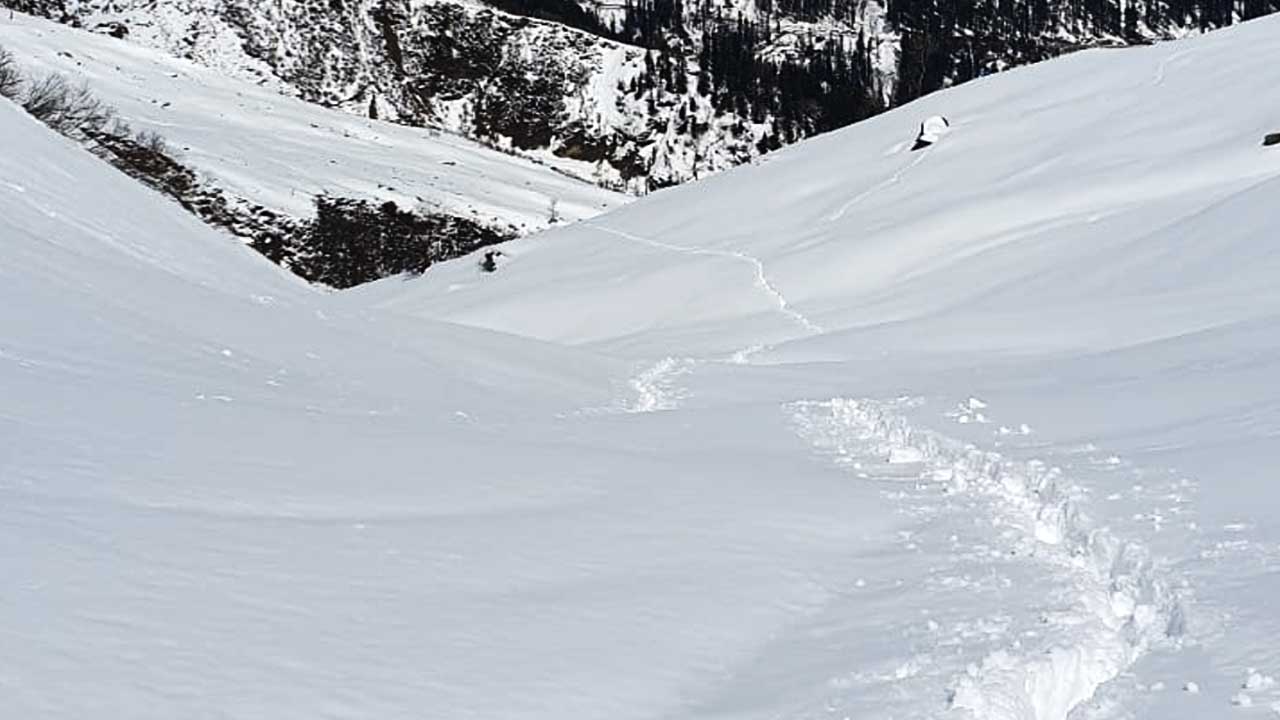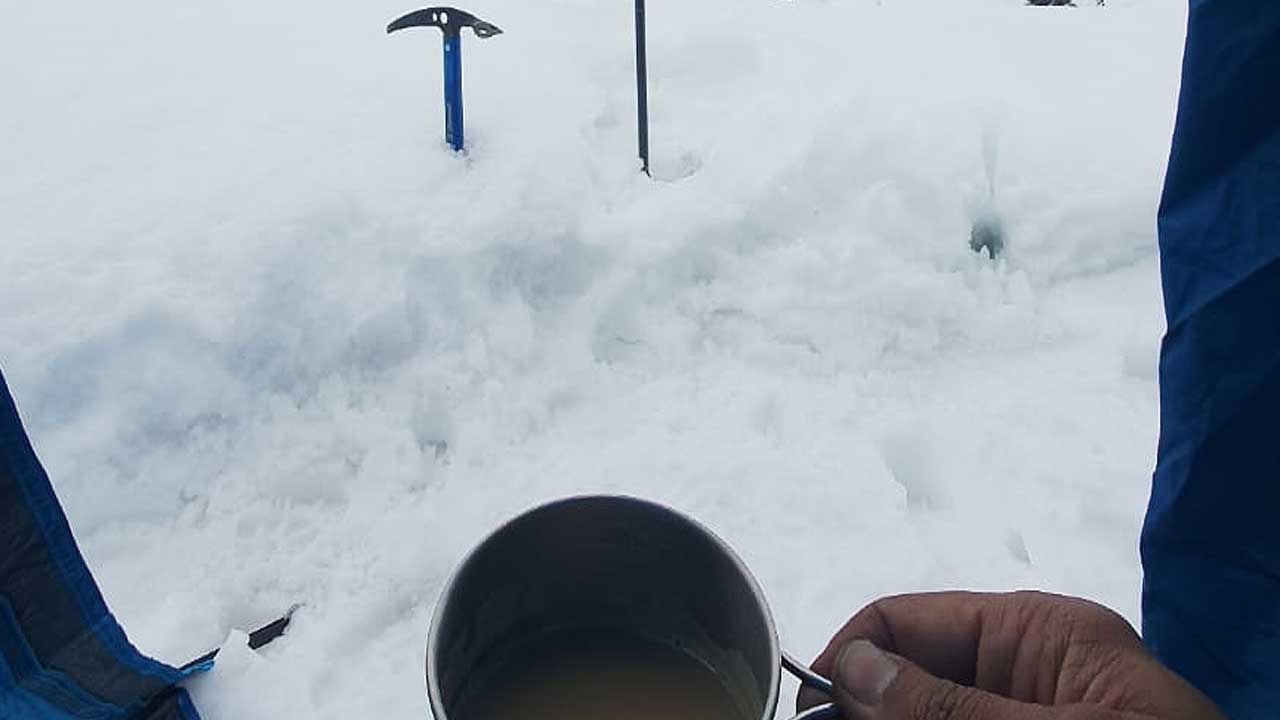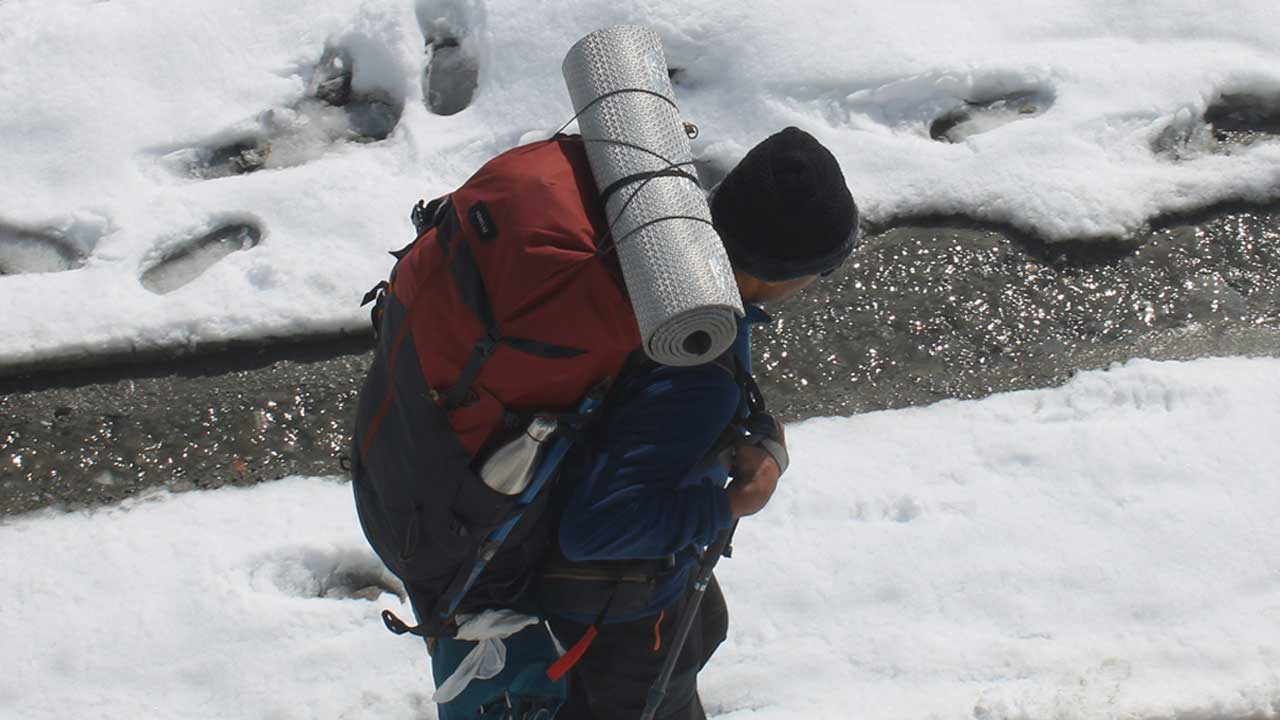Your Guide to Winter Trekking in the Himalayas: FAQs and Pro Tips
Blogs
Introduction
Winter trekking in the Himalayas has captured the imagination of adventure enthusiasts worldwide. With its snow-covered trails, serene landscapes, and crisp mountain air, the Himalayan winter promises an experience like no other. Whether you’re drawn to the challenge of trekking through snow or the allure of seeing the mountains in their quiet, pristine glory, the popularity of winter treks has soared in recent years.
As exhilarating as it sounds, winter trekking comes with its own set of challenges and uncertainties. From choosing the right trek and gear to understanding safety measures and preparing for high-altitude weather conditions, aspiring trekkers often have numerous questions. This article addresses the most common concerns to help you plan a successful and safe winter adventure in the Himalayas.
To provide the most reliable information, we’ve consulted experienced trekkers, mountaineers, and guides who have conquered some of the most demanding winter trails. Their expert insights will not only answer your questions but also inspire confidence as you embark on your journey through the snowy wilderness.
Frequently Asked Questions and Answers
What are the best winter treks in the Indian Himalayas?
The Indian Himalayas offer a variety of treks catering to different skill levels, making it a winter paradise for adventurers.
- Short Treks for Beginners:
- Triund (Dharamsala, Himachal Pradesh): This easy-to-moderate trek offers breathtaking views of the Dhauladhar range and takes about 2 days to complete.
- Duwara Trek (Manali, Himachal Pradesh): A lesser-known but scenic trail near Manali, ideal for first-timers. This trek typically takes 2-3 days and features gentle snow-covered paths.
- Challenging Treks for Experienced Trekkers:
- Chadar Trek (Leh, Ladakh): One of the most iconic winter treks, this challenging route involves walking on the frozen Zanskar River for 7-9 days.
- Ideal Durations and Grades:
- Short treks (1-3 days) are typically graded as easy to moderate, perfect for beginners.
- Longer treks (7-10 days) with higher altitudes and extreme weather are graded as difficult, and suited for seasoned trekkers.
Is winter trekking safe for beginners?
Winter trekking can be safe for beginners if proper precautions are taken and suitable trails are chosen.
- Risks and Challenges:
- Cold weather can lead to frostbite or hypothermia if not dressed appropriately.
- Slippery snow and icy patches increase the risk of falls.
- Reduced daylight hours and unpredictable weather can pose additional challenges.
- Recommended Beginner-Friendly Trails:
- Opt for short, well-marked treks such as Duwara, Triund or Prashar Lake (Himachal Pradesh). These trails have manageable gradients and are accessible in emergencies.
- Start with guided treks organized by experienced operators to ensure safety and comfort.
- Precautions:
- Invest in good quality winter trekking gear, including waterproof boots, layered clothing, and essentials like trekking poles and crampons.
- Acclimatize well by spending a day or two at a moderate altitude before starting the trek.
- Keep hydrated and consume high-energy snacks to maintain stamina.
By choosing the right trek and preparing adequately, beginners can safely enjoy the magic of the Himalayan winters while building confidence for more challenging adventures.
Preparation and Gear
What essential gear is required for a winter trek?
Winter trekking in the Himalayas demands specialized gear to ensure safety and comfort in extreme conditions. Here are the essentials:
- Layering System:
- Base Layer: Wicks moisture away from the body, keeping you dry. Opt for thermal wear made from merino wool or synthetic materials.
- Insulation Layer: Traps body heat and provides warmth. Use fleece or down jackets for effective insulation.
- Outer Shell: Protects against wind, snow, and rain. A waterproof and windproof jacket with good breathability is crucial.
- Equipment:
- Snow Boots: Insulated and waterproof trekking boots with good grip to navigate snow and icy surfaces.
- Trekking Poles: Provide stability, especially on slippery terrains. Adjustable poles with snow baskets are ideal.
- Crampons or Microspikes: Attach to your boots for better traction on ice.
- Gaiters: Prevent snow and moisture from entering your boots.
- Sleeping Bags and Tents:
- High-quality sleeping bags rated for sub-zero temperatures are essential to stay warm during cold nights.
- Use four-season tents designed to withstand heavy snow and strong winds for proper shelter in winter conditions.

How do I train for a winter trek?
Preparation is key to ensuring a safe and enjoyable winter trekking experience. A combination of physical, acclimatization, and mental training is essential.
- Physical Fitness:
- Endurance Training: Engage in cardio exercises like running, cycling, or swimming to build stamina. Aim for at least 30-60 minutes of activity 4-5 times a week.
- Strength Training: Focus on building leg and core strength through exercises like squats, lunges, planks, and step-ups.
- Flexibility Training: Incorporate stretching or yoga to improve flexibility and prevent injuries during the trek.
- Acclimatization Tips:
- Spend time at a moderate altitude (2,500-3,000 meters) before ascending higher to help your body adjust.
- Gradually increase your altitude over a few days to avoid altitude sickness.
- Stay hydrated and consume carbohydrate-rich foods for energy.
- Mental Preparedness:
- Understand that extreme cold and harsh conditions can test your resilience. Prepare mentally for challenges like physical fatigue, limited comfort, and unpredictable weather.
- Practice visualization techniques to mentally rehearse overcoming difficulties and boost your confidence.
By prioritizing the right gear and thorough training, you’ll be well-prepared to tackle the unique challenges of winter trekking in the Himalayas.
Logistics and Planning
When is the best time for winter trekking in the Himalayas?
- Months with Optimal Snow Conditions:
- The ideal time for winter trekking in the Himalayas is from December to February. During these months, snow blankets the trails, creating a magical landscape for trekkers.
- December and January are peak winter months with fresh snow and colder temperatures, while February sees slightly longer daylight hours and relatively stable weather.
- Impact of Weather Variability:
- Weather in the Himalayas can be unpredictable, with sudden snowfall and temperature drops.
- Check the local forecast before planning your trek and be prepared for delays or changes in itinerary due to weather conditions.
- Lower-altitude treks are less affected by harsh weather and are safer options during periods of heavy snowfall.
What should I pack for a winter trek?
Packing for a winter trek requires careful planning to ensure you’re equipped for cold temperatures and snowy conditions.
- Detailed Checklist for Clothing, Accessories, and Personal Items:
- Clothing: Base layer: Thermal tops and bottoms.
- Insulation: Fleece jackets, down jackets, and insulated pants.
- Outerwear: Waterproof and windproof jackets and pants.
- Accessories: Woolen caps, balaclava, gloves (inner and outer), and thermal socks.
- Footwear: Insulated snow boots with good grip.
- Gaiters to keep snow out of your shoes.
- Personal Items: High-quality sleeping bag (rated for -10°C or lower).
- Four-season tent (if not provided by organizers).
- Headlamp with extra batteries, sunglasses with UV protection, and sunscreen.
- Food and Hydration Strategies for Winter Conditions:
- Food: Carry high-energy snacks like nuts, energy bars, and chocolates.
- Ready-to-eat meals or lightweight dehydrated food are practical for treks.
- Keep hot beverages like tea or soup in a thermos to stay warm.
- Hydration: Drinking water regularly is crucial, even if you don’t feel thirsty in the cold.
- Use an insulated water bottle to prevent water from freezing.
- Add electrolytes to your water to replenish salts and maintain energy.
By planning the timing and packing thoughtfully, you can maximize your comfort and safety during your Himalayan winter trekking adventure.
On-Trek Challenges

How do I stay warm during the trek?
Staying warm is critical for comfort and safety during a winter trek. Here are strategies to manage body heat and prevent the cold from taking a toll:
- Tips for Layering and Keeping Warm:
- Follow the three-layer system: a moisture-wicking base layer, an insulating middle layer (like fleece or down), and a windproof and waterproof outer shell.
- Keep extremities warm by wearing insulated gloves, thick socks, and a woolen cap or balaclava. Protect your face with a scarf or neck gaiter.
- Avoid sweating, as damp clothing can make you feel colder. Adjust layers as needed to prevent overheating.
- Managing Body Heat:
- Keep moving during breaks to maintain circulation and body warmth.
- Use hand warmers and toe warmers if temperatures drop significantly.
- Nighttime Warmth:
- Use a sleeping bag rated for sub-zero temperatures. If your bag isn’t warm enough, layer up inside with thermals or an extra blanket.
- Place a hot water bottle in your sleeping bag before bedtime to preheat it.
- Insulate yourself from the cold ground by using an additional foam or inflatable sleeping pad under your sleeping bag.
What are common health issues during winter treks?
Health challenges are common in the cold and high-altitude conditions of winter treks. Awareness and preparedness can prevent or mitigate these risks:
- Frostbite and Hypothermia Prevention:
- Frostbite: Occurs when extremities (fingers, toes, nose, ears) are exposed to freezing temperatures.
- Prevent it by wearing insulated gear and keeping these areas covered.
- Avoid prolonged exposure to wind and snow, and check for numbness or discoloration.
- Hypothermia: A dangerous drop in core body temperature.
- Stay dry, keep moving, and maintain adequate calorie intake.
- If symptoms like uncontrollable shivering or confusion appear, seek warmth and medical attention immediately.
- Frostbite: Occurs when extremities (fingers, toes, nose, ears) are exposed to freezing temperatures.
- Coping with Altitude Sickness and Cold-Related Fatigue:
- Altitude Sickness: This can occur above 2,500 meters, with symptoms like headache, nausea, and dizziness.
- Ascend gradually and allow time for acclimatization.
- Stay hydrated and avoid alcohol or tobacco.
- Use medication like acetazolamide if recommended by a doctor.
- Cold-Related Fatigue: A result of prolonged exposure to low temperatures and physical exertion.
- Rest frequently, eat high-energy snacks, and stay hydrated.
- Altitude Sickness: This can occur above 2,500 meters, with symptoms like headache, nausea, and dizziness.
By following these tips and recognizing early signs of health issues, you can enjoy a safe and comfortable winter trekking experience in the Himalayas.

Experience and Budget
How much does a typical winter trek cost?
The cost of a winter trek in the Himalayas can vary based on factors like the trek’s duration, location, and whether you’re trekking independently or with a guided group. Here’s a typical expense breakdown:
- Expense Breakdown:
- Gear: High-quality winter trekking gear (jackets, boots, sleeping bags, etc.) can cost between ₹8,000 and ₹20,000 if rented or ₹25,000+ if purchased.
- Permits: Most treks require forest or entry permits, ranging from ₹200 to ₹5,000 depending on the region and trek.
- Guides and Porters: Hiring a guide costs around ₹1,000–₹2,500 per day, and porters charge ₹500–₹1,000 per day. Joining an organized trek package can cost ₹10,000–₹30,000 for popular routes.
- Travel and Accommodation: Transport to the base camp (e.g., by train, bus, or flight) and accommodation costs vary widely. Budget ₹2,000–₹10,000 depending on the location and your preferences.
- Food: Meals during the trek are usually included in packages, but independent trekkers should budget ₹300–₹1,000 per day.
- Budget-Friendly Tips for First-Timers:
- Rent gear instead of buying, especially for your first trek.
- Travel in groups to split the costs for guides, porters, and accommodation.
- Choose shorter or nearby treks to save on travel and permits.
- Book with local trekking operators who often offer competitive rates.
What can I expect in terms of difficulty and rewards?
Winter trekking presents unique challenges and incredible rewards for those who venture into the snowy wilderness.
- Realistic Expectations for Trekking in Snow and Harsh Weather:
- Snow-covered trails can be physically demanding due to their slippery and uneven nature.
- Cold temperatures (often sub-zero) require both physical and mental stamina.
- Shorter daylight hours and potential delays due to weather mean strict time management is essential.
- The Unique Beauty of Snow-Covered Landscapes and Serenity:
- Trekking in winter offers unparalleled tranquility, as trails are less crowded compared to summer.
- The pristine beauty of snow-blanketed peaks, frozen rivers, and alpine meadows creates a surreal experience.
- Sunrises and sunsets over snowy landscapes are breathtakingly picturesque, making every challenge worthwhile.
A winter trek in the Himalayas combines the thrill of adventure with the peace of nature’s solitude. With the right preparation and mindset, it becomes an unforgettable journey of personal accomplishment and awe-inspiring beauty.
Expert Tips for a Successful Winter Trek
Embarking on a winter trek in the Himalayas requires thoughtful preparation and a proactive approach to ensure a safe and enjoyable experience. Here are expert tips to help you succeed:
- Prepare Mentally and Physically:
- Mental resilience is as important as physical fitness. Prepare yourself for harsh conditions, long hours of trekking, and potential discomfort.
- Train at least 4-6 weeks before your trek with cardio, strength, and flexibility exercises. Simulate trekking conditions by hiking with a loaded backpack.
- Choose Experienced Guides and Operators:
- Experienced guides can provide critical support, from navigating difficult terrain to ensuring safety in adverse weather.
- Trekking operators often handle permits, equipment, and logistics, making the journey smoother, especially for first-time trekkers.
- Look for operators with strong reviews, local expertise, and clear communication about safety protocols.
- Emergency Preparedness:
- Familiarize yourself with basic first aid and symptoms of altitude sickness, frostbite, and hypothermia.
- Carry a fully equipped first aid kit, emergency blankets, and extra snacks.
- Always have a communication device like a satellite phone or GPS tracker for remote regions.
- Be flexible and ready to turn back if weather conditions worsen or health issues arise—safety always comes first.

Conclusion
Winter trekking in the Himalayas is a truly transformative experience, blending the thrill of adventure with the serenity of untouched landscapes. From the FAQs, you’ve learned about the best treks, essential gear, training strategies, and safety measures needed for a successful journey.
With proper preparation, the right mindset, and guidance from experienced operators, even beginners can safely enjoy the magic of winter trekking. Whether it’s the snow-draped forests, frozen rivers, or panoramic views of Himalayan peaks, the rewards far outweigh the challenges.
Ready to take the first step? Check out our specially curated winter trek packages or contact us directly for expert advice and personalized guidance. Let’s make your Himalayan winter adventure a reality!